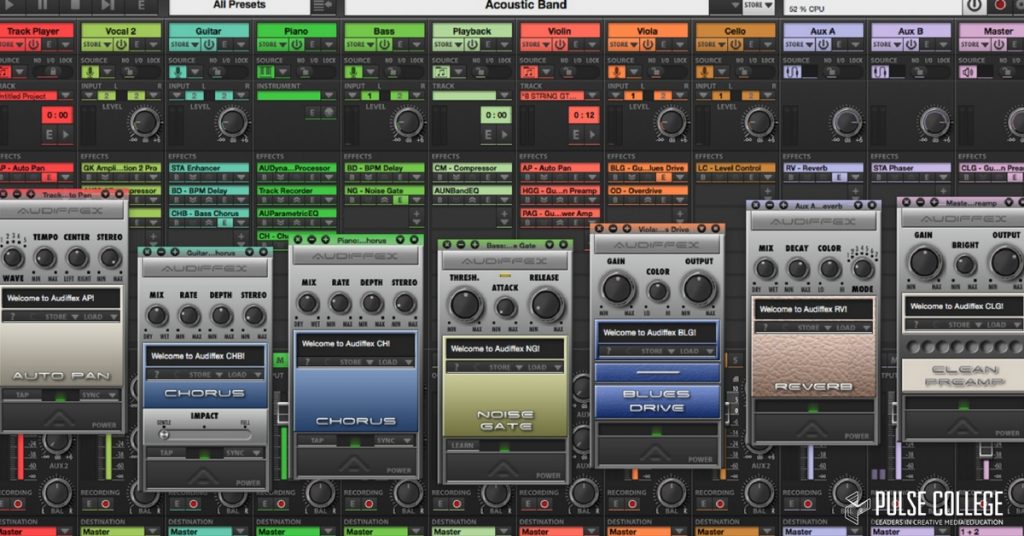
To the journeyman sound engineer, the sheer number of audio effects to choose from can be mind boggling. There are countless different pitch, modulation and time lapse effects, and knowing which to apply to a given mix is a subtle art that takes years to master. This week we give a quick primer to help pick apart the array of sound effects at your disposal. Here at Pulse College we offer a number of Music Production and Music Technology Courses to help our students get to grips with the tools of the trade.
Distortion
The mainstay of punk, grunge and garage rock bands the world over, distortion is what makes heavy rock heavy. Technically, any effect that modifies the signal in any way other than level is considered distortion. However, in reality it usually refers to either overdrive or fuzz. The principles of both are the same – they basically aim to recreate the “warm” quality of a valve amp cranked up to the max. The only issue is that both sound effects tend to produce an abrasive high gain rasp that isn’t always the intended effect (though for many a metalhead it’s exactly the intended effect). However, with further work in the studio these can be removed. Which brings us to…
Filter Sound Effects
Pretty much what it says on the tin. Filter sound effects filter out certain frequencies to change the colour of a mix. High and low pass filters are the most common, and they (rather confusingly) remove low and high frequencies respectively. A band pass filter will affect frequencies within preset limits, and will attenuate frequencies beyond. It can be a bit of a blunt tool, but if there are any particularly glaring aspect of a recording that needs to go pronto then this is your go-to tool.
Compressors
Compression is an essential part of any audio engineer’s arsenal. Very simply, it reduces the volume of frequencies above a certain threshold and amplifies sounds below another threshold. It’s effective for cleaning up a mix and removing any clipping effects but it needs to be used in moderation, and overdoing it can result in an unnatural and generic sounding mix. See for reference the “loudness wars” of the nineties and noughties. Compressors are often used in conjunction with limiters and noise gates, which provide an additional “safety net” by cutting off particularly high and low frequencies respectively.
Time-based Sound effects
A particular favourite of indie bands, time-based sound effects come in digital and analogue flavours. Examples include:
- Flanger
- Chorus
- Reverb
- Delays
- Phasers
- Harmonizers
- Pitch transposers
The principle behind all of these is much the same – the dry signal is captured, delayed and played back a moment later, creating a sort of layered effect. The effects are markedly different and they can be combined, so it takes a fair bit of experimentation to get the sound you’re looking for.
Music Production and Technology courses at Pulse College
Pulse College offers a number of industry-recognised Music Production Courses and Music Technology Courses which are geared to equipping students with a robust skill-set. What’s more, we have the world class facilities at Windmill Lane Recording studios at our disposal, meaning state-of-the-art technology will always be at your fingertips. Be sure to register for one of our upcoming open events if you want to learn more about how our courses can aid your development as a music producer or engineer.
[openday]
FOLLOW US